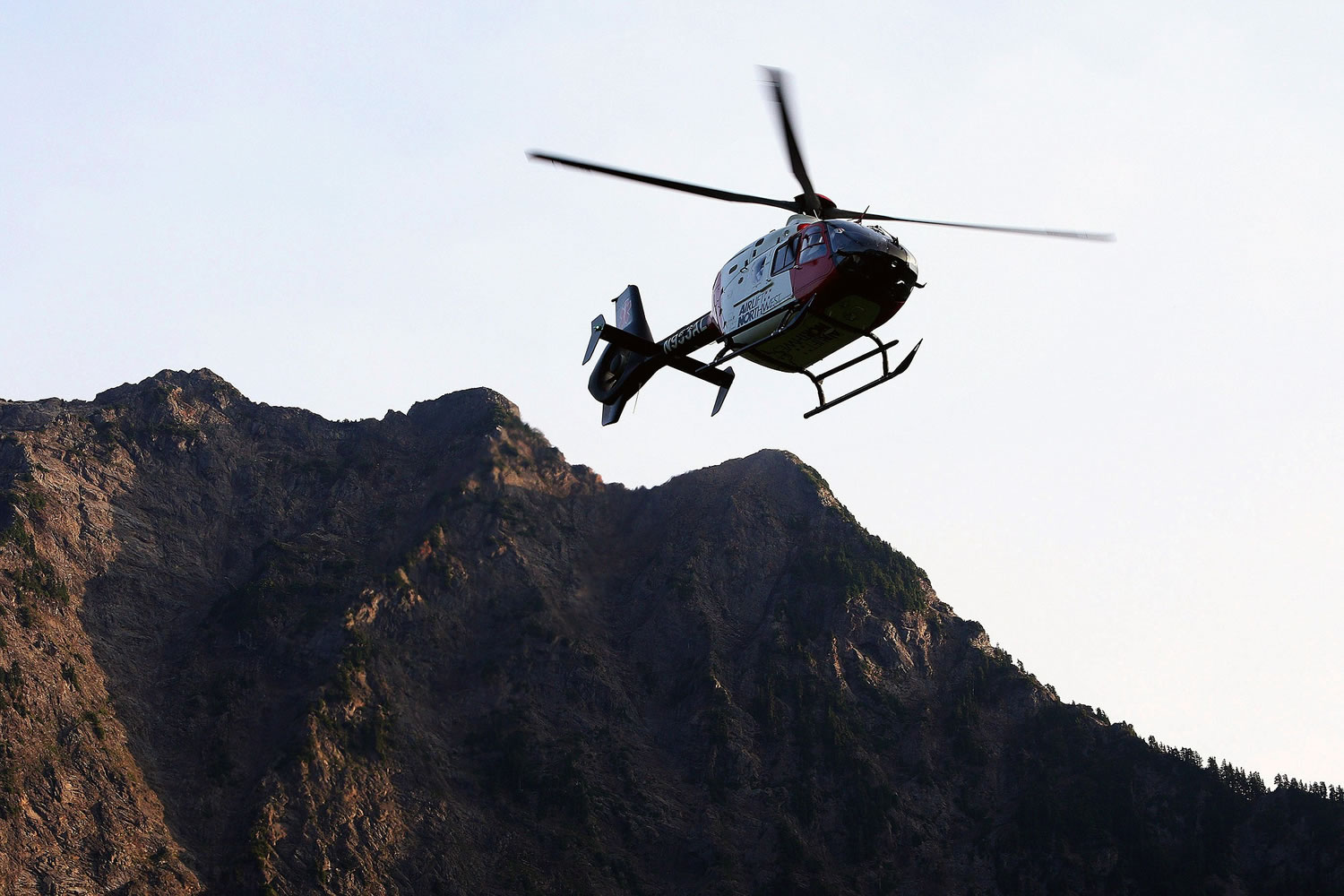VERLOT — Thousands of visitors each year make the easy 1-mile trek to glimpse spectacular snow and ice formations at the Big Four Ice Caves in Washington state.
But the attraction that has made the forested hike one of the most popular in the region has also made it dangerous.
On Tuesday, crews recovered the body of a 34-year-old woman buried when rock and ice fell at the back of a cave. Five people were injured in Monday’s collapse and are expected to survive.
The Snohomish County medical examiner’s office will identify the woman and determine the exact cause of her death, Snohomish County sheriff’s spokeswoman Shari Ireton said.
Search-and-rescue personnel worked with a state Transportation Department avalanche technician to check the stability of the ice and used small explosives to dislodge any possible debris, Ireton said. Technical rescue teams were then able to reach the victim.
“Areas of the cave are still collapsing and will continue to do so until the cave no longer exists,” said Peter Teske, a search-and-rescue deputy.
The ice caves area is prone to avalanches, falling rocks and ice, and visitors are urged not to leave the trail or enter the caves. Many people still wander in and around them, however, enticed by the icy cavernous openings formed from avalanches that cascade down the 6,135-foot Big Four Mountain during the winter and spring.
Signs warn visitors of the hazards from ice and rock at the popular hiking destination about 70 miles northeast of Seattle. At the trailhead to the caves, a sign posted at an information kiosk warns: “People have been killed and injured in and on the ice caves — be safe, not sorry!”
Warm weather has made the caves unstable this season, and access to the ice caves has been closed until further notice. Temperatures in the area Monday were in the 80s.
There have been deaths at the caves before. In July 2010, an 11-year-old girl was killed outside the caves by a bouncing chunk of ice.
A different section tumbled down Sunday, but none of those hikers inside was injured.
“It was a very terrifying moment,” said Sara Soleimani, an avid ice climber who filmed Sunday’s partial cave collapse and said she heard ice cracking just a few seconds before a chunk of the cave sheared off.
“I was shaking for about 10 minutes after,” said Soleimani, 29, of Long Beach, Calif.
Hikers, including many families with children, take a well-maintained trail to reach the ice caves, which are the lowest elevation permanent snow and ice patch in the United States outside of Alaska. People go to the area surrounding the caves for the spectacular mountain scenery and to escape the summer heat.
“These ice caves became famous after people started posting amazing photos of them on Instagram,” said Rachel Samanyi, 38, of Seattle, who has visited three times, though she has only gone inside the cave once. “I think people are curious about them because ice caves are one of the amazing wonders of nature.”
Scott Pattee, a water supply specialist with the Natural Resources Conservation Service, said this year’s snowpack has been almost nonexistent, and with so little snow, there have been fewer avalanches to feed the ice caves.
“It doesn’t surprise me that something like that happens. Ice melts when it’s warm,” he said.
Among those injured Monday was a 25-year-old man in intensive care was in serious condition, Harborview Medical Center spokeswoman Susan Gregg said, while a 35-year-old man was in satisfactory condition and a 35-year-old woman was treated and released. Two minors also were treated and released from another hospital.
Chloe Jakubowski, 18, told The Seattle Times that she and a handful of other people were in the cave when she heard a loud crack, then ice and debris cascaded down. She said she covered her head with her arms and crouched behind a giant rock of ice. When she stood up, a woman next to her lay unconscious.
She said she saw the warning signs outside but went in anyway, because she didn’t see anything that seemed to point toward a collapse and others were already in the cave.
Jakubowski told the newspaper that she and three friends drove about 15 miles to a pay phone to alert emergency crews. There was no cellphone service at the remote cave site.




